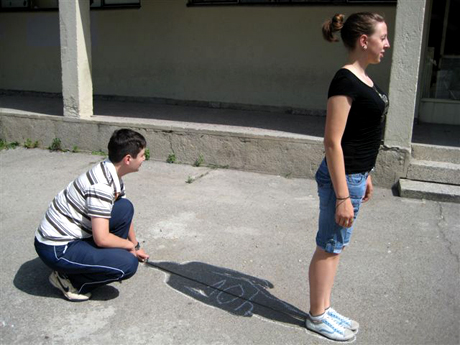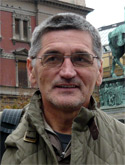Living with the sun in Serbia
Meet physicist Stevan Jokic, creator of the serbian version of the Living With The Sun program.

The result of a cooperation between the French Ministry of Education, the Academy of Sciences and the WHO Collaborating Centre La Securité Solaire, Living with the sun is an education programme started in 2005. It aims to give teachers and their trainers a turnkey, 10-session activities module. « Thus, we raise the pupils’ awareness through a scientific study of the sun’s effects on health, on skin colors and naturally, on the way to protect ourselves » stresses Pierre Cesarini, managing director of La Sécurité Solaire.
The success of Living with the sun goes way beyond France’s boundaries. « Today, there are teachers in over a hundred countries who subscribe to our program. A lot of them are French in foreign countries, but also french-speaking teachers in Belgium, Canada, Switzerland or in the Maghreb. » Translated versions of the program are also currently developed in Germany and Serbia.
In spring 2008, physicist Stevan Jokic – already known for his translation work for ten books of the La Main à la pâte project – started working on a serbian version of the program. « A colleague from the Free University of Berlin first told me about it. I found interesting to spread this method here.« , he explains. The translation finished, Stevan Jokic struggled to find funds to publish the program. But the scientist held on. Using the UV-paper furnished by La Sécurité Solaire, he introduced the module during seminars about science at school. There, 1500 teachers came from every corner of the Balkans to lent an attentive hear to his exposé.
In April, about thirty teachers started applying the method to their pupils – « 11-15 year-old kids, for the most part, sometimes older« . Their reception was excellent : « this first contact worked as a template for the teachers who had never heard about the program. They were able to see their colleagues at work with it. » For Stevan, the near future will be dedicated to the search of funds to publish the module, with 70 teachers being expected to jump on board for the year 2008/2009.
In Krusevac, a city of 57 000 inhabitants located 95 miles away in the south-east of Belgrade, Natala Ralic, a physics teacher in the city’s electrotechnic high school, tested the project out. « It started in may 2008« , she explains, « I worked with a group of twenty-five pupils, aged 15. » Here’s her approach : « First we run an inquiry in the class, asking what the links are between the sun and our health, in connection with the steps 8, 9 and 10 of the method. Then I ask each student to search for information in dictionaries, newspapers or websites. At the end, I introduce the Living with the sun program. Afterwards, my pupils can start the experiences. » Taking initiative is encouraged : « they have a lof of imagination, especially when testing the UV-paper in different places : under a tree, a parasol, in the sun light… »
First contact, first positive feedback. As the pupils start a new school year, the stakes rise up. « This year, I try to make more pupils embrace the program – 50 of them, probably. I also try to convince my colleague from other schools to be a part of it, most notably biology, physics and chemistry teachers. The goal is to spread the action to a maximum of pupils, from primary school to high school. »
 Stevan Jokic :
Stevan Jokic :
A 62 years old, nuclear physics doctor, teacher at the Belgrade University and Scientific Director of the Vinça Institute. His scientific formation program for teachers in Serbia and Montenegro, Ruka u Testu, has been created in 2001. Three years later, the program was in action in 250 of the 500 serbian primary schools. In 2007, this action earned him to share the Purkwa Price of scientific literacy teaching with chilian biochemist Jorge Eduardo Allende. This award was given to him by Saint-Etienne’s Ecole des Mines et the Academy of Sciences. Stevan Jokic translated numerous « La main à la pâte » books and taught a lot of teachers to this method created by Georges Charpak, the 1992 winner of the Nobel Prize in Physics.


